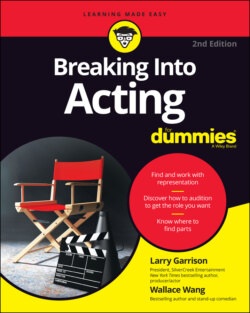Читать книгу Breaking into Acting For Dummies - Larry Garrison - Страница 29
Producing a Script
ОглавлениеAfter a production company or studio buys the rights to a story idea, the next step is to produce the script, which is the responsibility of the producer. (Many producers run their own production companies and work with studios, but if a studio has an idea that they want produced, they may hire the producer who optioned the rights to the project.)
Producing a script involves several packaging processes:
Hiring a director: The producer hires the director. The director and the producer, and sometimes with a studio, may then work together to hire the rest of the production crew, such as a costume designer or choreographer.
Polishing the script: Scriptwriters often rewrite the script several times, sometimes for valid reasons to strengthen the story and sometimes for trivial reasons, such as to accommodate a major star who wants a certain role expanded or altered before she will agree to play the role.
Scouting out locations to film scenes: The producer, along with several assistants, may scout locations for filming.
Finding and booking a place to rehearse: The director, an assistant, or the stage manager takes care of setting a rehearsal schedule. In film and television, rehearsals take place on the set. In theater, rehearsals may take place anywhere, usually because the actual set or theater isn’t available yet.
Setting a shooting or rehearsal schedule: In film and television, the director and producer may collaborate on defining a shooting schedule. In theater, the director and stage manager may set a rehearsal schedule.
Establishing a budget: The producer is responsible for estimating the cost of producing the film, television show, or play. (A producer may also hire a unit production manager to help with this task as well.) She must consider the cost of the shooting locations, actors’ salaries, costumes, catering, travel and lodging expenses, special effects (a fire or a snow storm, for example), and so on. Budgets are often divided into above-line and below-line costs. Above-line costs make up the expenses for the creative people including the major actors, director, and producer. The below-line costs are for the technical people needed, such as lighting technicians, makeup artists, and costume designers.
Storyboarding each scene: For a film, an artist sketches out the way each scene will look, a process known as storyboarding. By seeing a sketch of a scene, a director can tell whether filming a scene from a specific angle will work. Finding and fixing problems on a storyboard is infinitely faster and less expensive than trying to fix the problem during filming or after the film has already been shot.
Auditioning actors to play the various roles: Every speaking role, from the major starring roles to the smallest roles where the actor may just say one line, must be filled.
